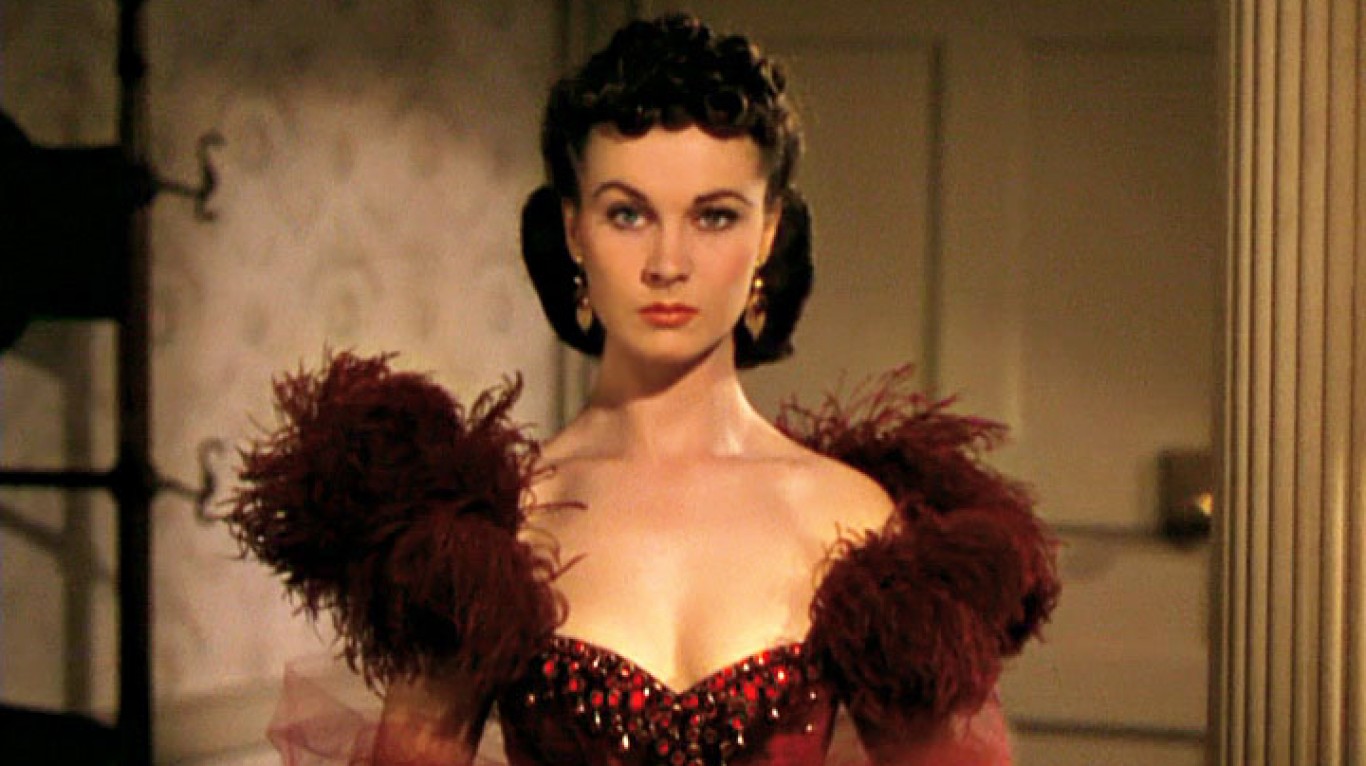Media
This Is Why 1939 Is Considered the Best Year for Movies

Published:
Last Updated:

During Hollywood’s Golden Era, no year glistened more brightly than 1939. Consider this: The nominees for Best Picture in 1940 were “Gone With the Wind,” “Dark Victory,” “Goodbye, Mr. Chips,” “Love Affair,” “Mr. Smith Goes to Washington,” “Ninotchka,” “Of Mice and Men,” “Stagecoach,” “Wuthering Heights,” and “The Wizard of Oz.”
Four of those films earned a place on the American Film Institute’s original list of the greatest 100 American movies that was compiled in 1998.
To further underscore the breadth of movie greatness from 1939, here are some of the films that were not nominated for Best Picture: “Goodbye, Mr. Chips,” “Gunga Din,” “The Hound of the Baskervilles,” “The Hunchback of Notre Dame,” “Intermezzo,” “The Private Lives of Elizabeth and Essex,” “The Roaring Twenties,” “Son of Frankenstein,” “Stanley and Livingstone,” “The Women,” and “Young Mr. Lincoln.”
Out of that group of all-time great films, “Gone With the Wind,” released in December of 1939, has the highest estimated box office gross, adjusted for inflation, of any movie ever. According to Comscore, a media measurement and analytics company, “GWTW” sold 201 million tickets over the seven times it has been released since 1939, resulting in an estimated adjusted gross of $1.81 billion. That puts the Civil War epic ahead of box-office blockbusters “Star Wars,” “The Sound of Music,” and “E.T. the Extra-Terrestrial.”
What made 1939 so special for filmgoers? The sheer number of movies released, an improving economy, rising stars, and, and artists escaping fascism in Europe for America. “All the right forces converged in 1939, and the result was a record number of classic films,” said Thomas Hischak, author of the book “1939: Hollywood’s Greatest Year,” in an interview with 24/7 Tempo.
Filmgoers in 1939 were blessed with many choices. According to Hischak, there were 505 movies released that year, representing every genre.
America was finally emerging from the Great Depression, and workers had more disposable income for diversions like the cinema. It cost about 25 cents to see a film. This is what it cost for a movie ticket the year you were born.
“Every studio in 1939 broke records for the amount of money they spent on their big spectacle projects (RKO Radio Pictures’ ‘Gunga Din’ and ‘The Hunchback of Notre Dame,’ Twentieth Century Fox’s ‘The Rains Came,’ ‘Gone with the Wind,’ etc.),” said Hischak, who is also an adjunct professor teaching film and theater at Flagler College in St. Augustine, Florida. “I don’t think they would do that if they didn’t think there was an audience willing to pay to see these expensive films.”
The vaunted studio system that was churning out a movie a day was nurturing rising stars such as John Wayne, Vivian Leigh, Jimmy Stewart, Ingrid Bergman, Henry Fonda, and Judy Garland. Reigning Hollywood royalty Errol Flynn, James Cagney, Bette Davis, and Humphrey Bogart among others all appeared in films that year.
“The Hollywood studio system was very strong in 1939,” said Hischak. “Stars were still under contract, and distribution was still in the hands of the studios so they controlled the market as well as the product. This was the last year this was true. The debut or rise of so many major movie stars in 1939 is so impressive that it must be considered a major factor in the year producing so many great films.”
The artists who fled Europe’s fascism were making an impact on American cinema, among them directors Fritz Lang and Billy Wilder; actors Hedy Lamarr, Peter Lorre, and Conrad Veidt; and composers Franz Waxman and Erich Wolfgang Korngold.
Those who had already come to the United States from Europe — writer/director Ernst Lubitsch, director Michael Curtiz, and actresses Marlene Dietrich and Greta Garbo — were making an indelible imprint on American movie culture. “Hollywood without German and Eastern European refugees is unthinkable,” said Hischak. “Most had come to the States in the early 1930s and were well established by 1939.”
Film greatness in 1939 was hardly limited to Hollywood. France produced two cinematic giants with Marcel Carné’s “Daybreak” and Jean Renoir’s “The Rules of the Game.” Those two films rate highly among film connoisseurs though are not as well known among the general public. Here are the best movies you’ve never seen.
Choosing the right (or wrong) time to claim Social Security can dramatically change your retirement. So, before making one of the biggest decisions of your financial life, it’s a smart idea to get an extra set of eyes on your complete financial situation.
A financial advisor can help you decide the right Social Security option for you and your family. Finding a qualified financial advisor doesn’t have to be hard. SmartAsset’s free tool matches you with up to three financial advisors who serve your area, and you can interview your advisor matches at no cost to decide which one is right for you.
Click here to match with up to 3 financial pros who would be excited to help you optimize your Social Security outcomes.
Have questions about retirement or personal finance? Email us at [email protected]!
By emailing your questions to 24/7 Wall St., you agree to have them published anonymously on a673b.bigscoots-temp.com.
By submitting your story, you understand and agree that we may use your story, or versions of it, in all media and platforms, including via third parties.
Thank you for reading! Have some feedback for us?
Contact the 24/7 Wall St. editorial team.